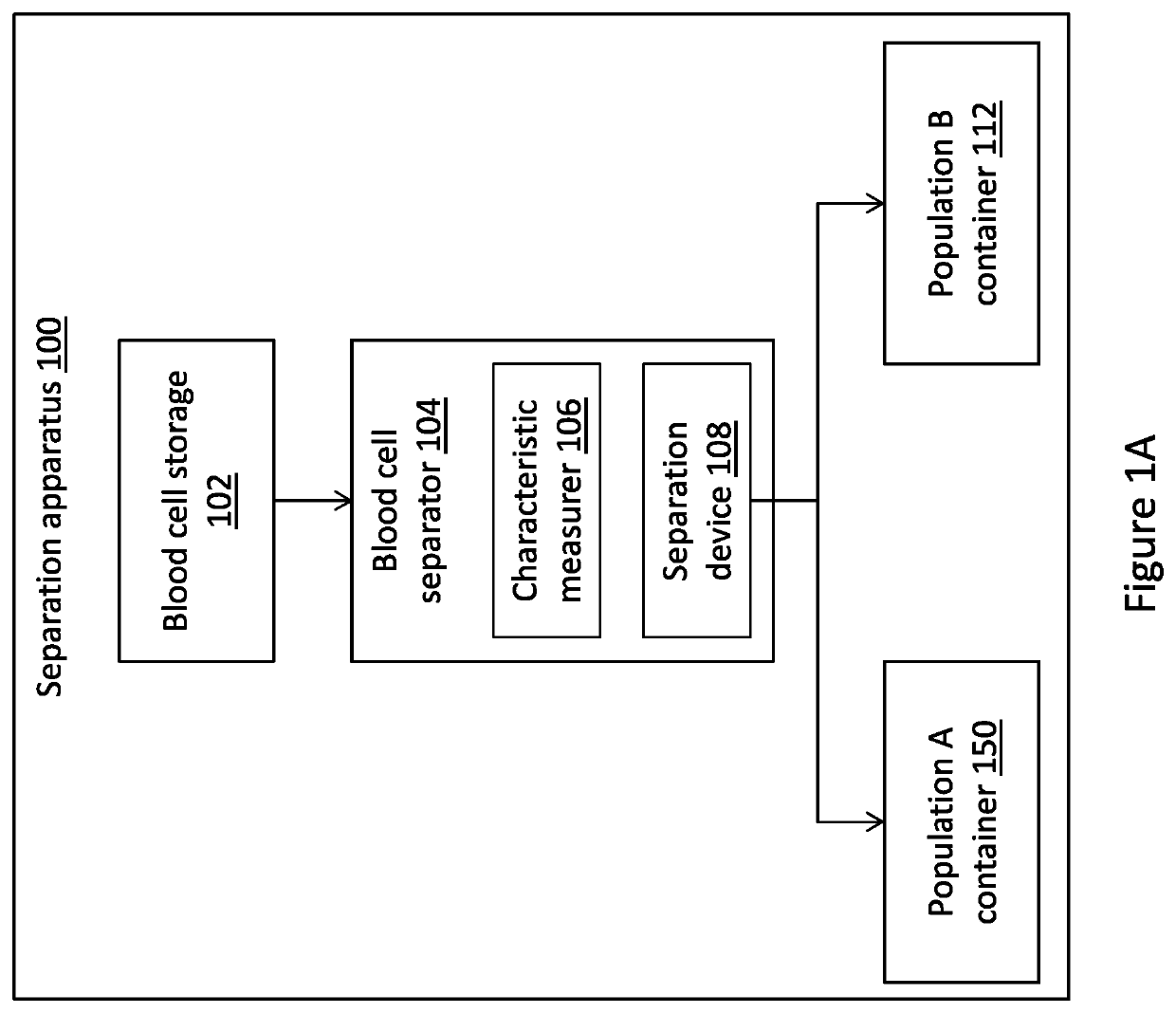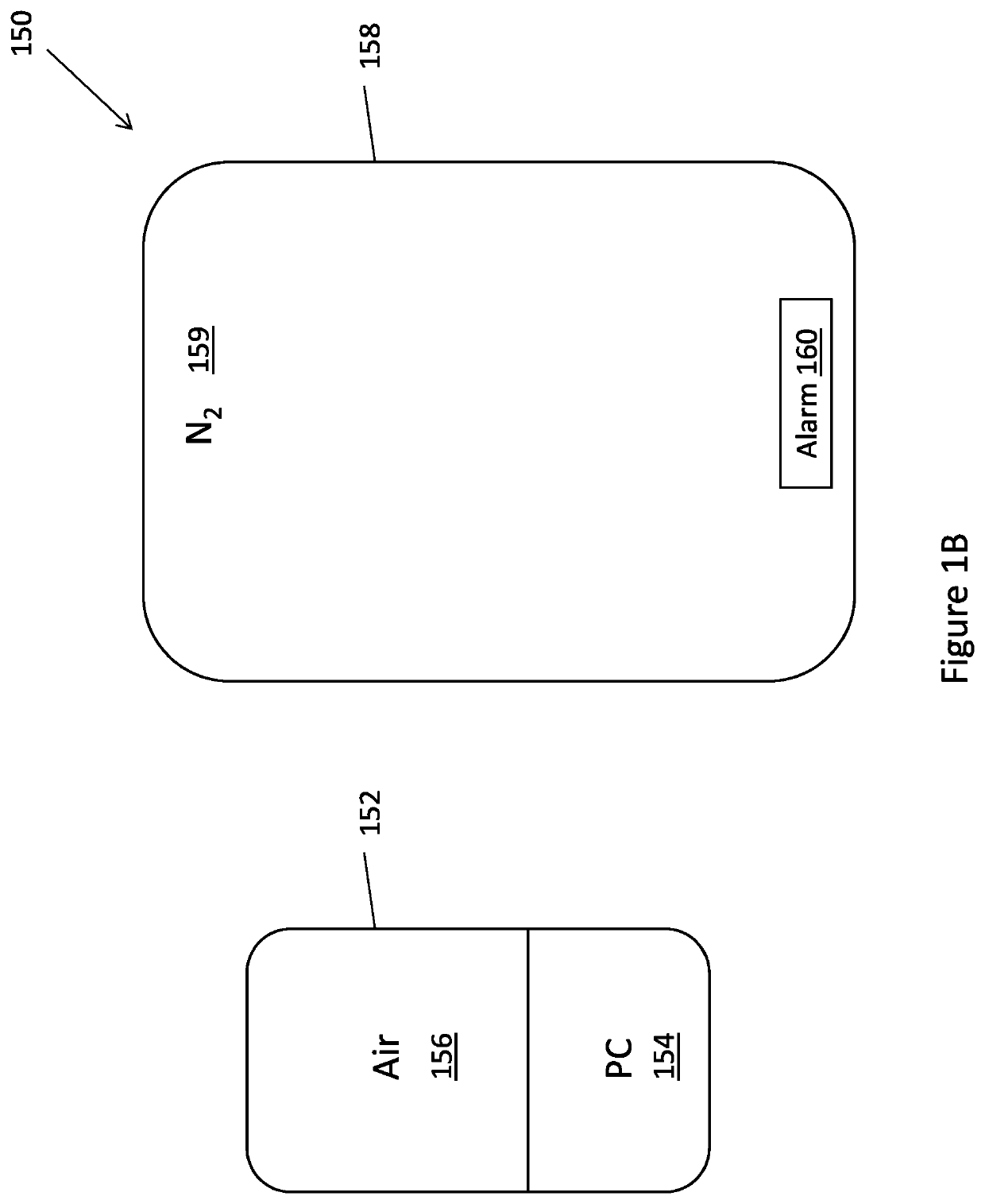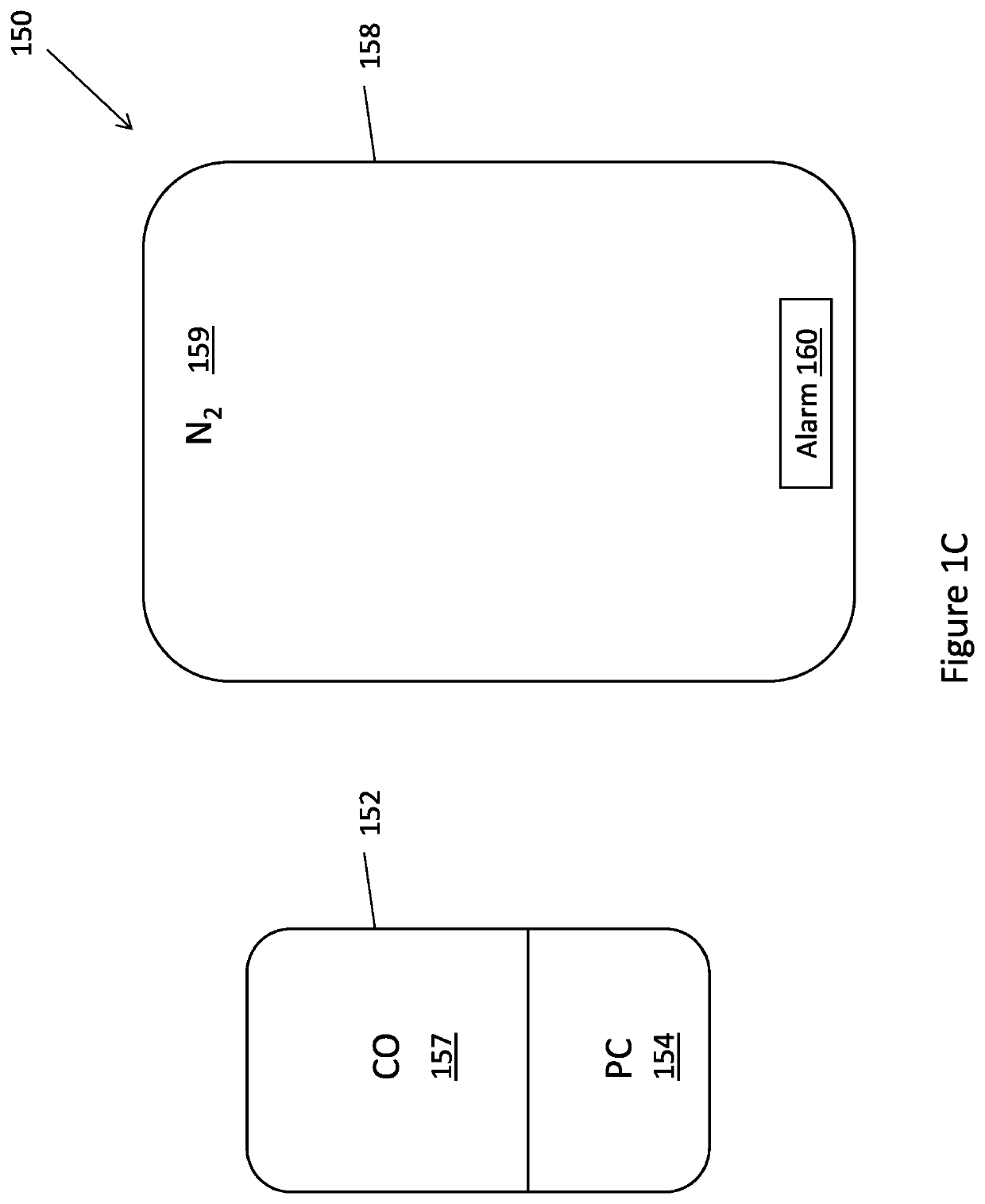System and method for carbon monoxide atmosphere stored blood components
a carbon monoxide atmosphere and carbon monoxide technology, applied in biochemistry equipment, medical devices, biochemistry apparatus and processes, etc., can solve the problems of limiting the total amount collected, unable to reduce, and loss of biological function, so as to prolong the shelf life of platelets, inhibit the proliferation of pathogens, and increase safety
- Summary
- Abstract
- Description
- Claims
- Application Information
AI Technical Summary
Benefits of technology
Problems solved by technology
Method used
Image
Examples
Embodiment Construction
[0041]Headings are included herein to aid in locating certain sections of detailed description. These headings should not be considered to limit the scope of the concepts or embodiments described under any specific heading. Furthermore, concepts or embodiments described in any specific heading are generally applicable in other sections or may optionally be combined with other sections throughout the entire specification.
[0042]The present disclosure is of a system, method and device for extending the storage period of platelets by treatment of platelets with carbon monoxide (CO) and preventing exposure of the platelets to oxygen, followed by separation of platelets into different populations. FIGS. 1A-1E, 2 and 3 show exemplary embodiments of systems and methods for storage and separation of platelets into different populations. FIGS. 4-6 and the accompanying descriptions illustrate experimental proof that forms the basis of the systems and methods disclosed.
[0043]Reference is now ma...
PUM
 Login to View More
Login to View More Abstract
Description
Claims
Application Information
 Login to View More
Login to View More - R&D
- Intellectual Property
- Life Sciences
- Materials
- Tech Scout
- Unparalleled Data Quality
- Higher Quality Content
- 60% Fewer Hallucinations
Browse by: Latest US Patents, China's latest patents, Technical Efficacy Thesaurus, Application Domain, Technology Topic, Popular Technical Reports.
© 2025 PatSnap. All rights reserved.Legal|Privacy policy|Modern Slavery Act Transparency Statement|Sitemap|About US| Contact US: help@patsnap.com



